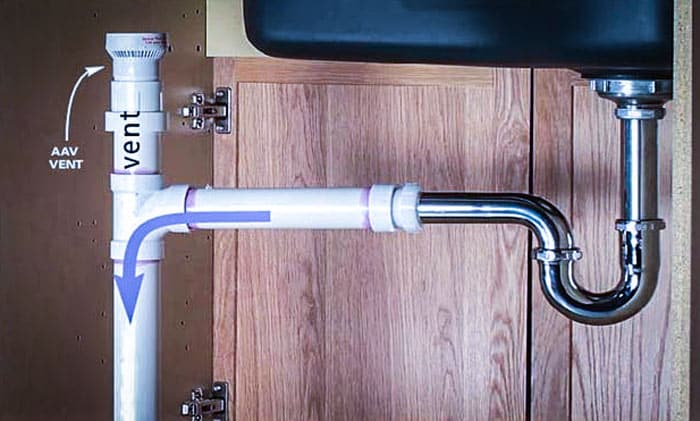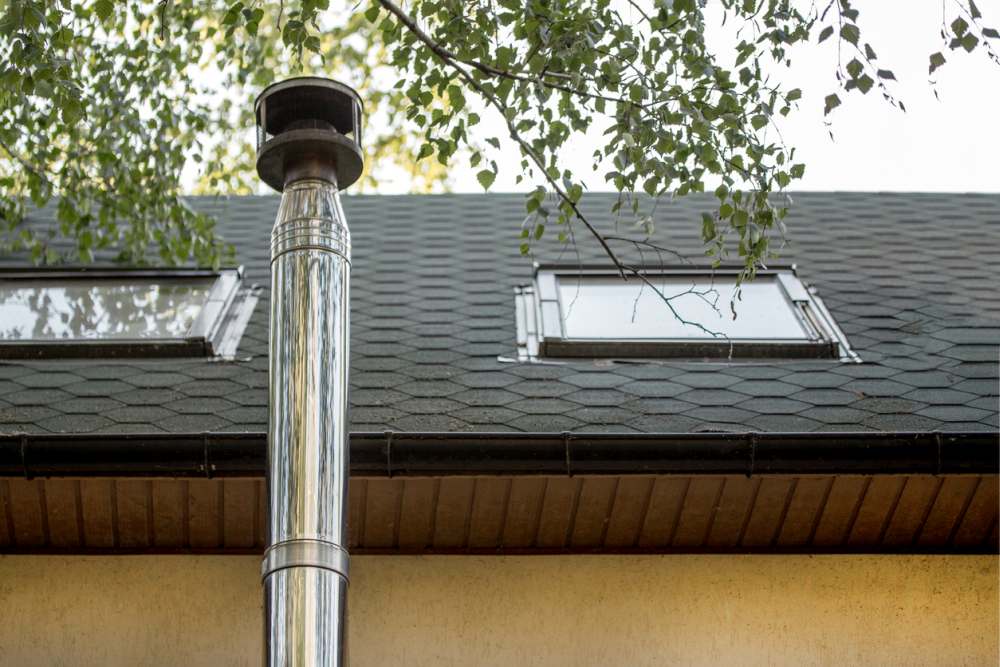The Way Proper Ventilation Safeguards Your Plumbing System
The Way Proper Ventilation Safeguards Your Plumbing System
Blog Article
What are your ideas concerning What Is A Plumbing Vent & How Do They Work??

Appropriate air flow in pipes systems is often neglected, yet it is important for preserving the performance and security of your home's plumbing. Ventilation aids manage atmospheric pressure, stop the accumulation of damaging gases, and guarantee the efficient removal of waste. In this guide, we will certainly check out the importance of proper pipes ventilation, just how it works, and the advantages it gives your pipes system.
Exactly How Air Flow Works in Pipes Solutions
Atmospheric Pressure Policy
Correct ventilation keeps balanced air pressure within the pipes system. When water flows with pipes, it displaces air. Without appropriate ventilation, this variation can develop negative stress, bring about slow down drains or siphoning of water from catches, which can trigger unpleasant odors to leak right into the home.
Protecting Against Sewer Gas Accumulation
One of the most important functions of plumbing vents is to avoid sewer gases, such as methane and hydrogen sulfide, from collecting within the home. These gases can posture significant wellness threats and are extremely combustible. Vent pipes allow these gases to escape securely outdoors.
Helping in Waste Removal
Air flow helps in the efficient elimination of wastewater by protecting against airlocks in the drain system. When air can move freely via the vents, it enables water and waste to flow efficiently via the pipelines, minimizing the danger of obstructions and back-ups.
Advantages of Appropriate Ventilation
Enhanced System Performance
Appropriately ventilated plumbing systems run much more successfully, with less clogs, faster draining, and much less pressure on the pipes. This effectiveness expands the life-span of the plumbing system.
Improved Air Quality
By protecting against sewer gases from entering your home, correct ventilation contributes to better interior air quality, making your living environment healthier and much more comfy.
Preventing Water Damages
Ample air flow aids avoid water from being siphoned out of traps, which can result in sewer gases entering the home and causing water damages over time.
Steps to Guarantee Correct Air Flow
Consulting Pipes Codes
Always speak with local plumbing codes when making or changing your pipes system. These codes offer the necessary standards for proper airing vent and ensure your system satisfies safety requirements.
Regular Assessment and Maintenance
Routine inspections can assist recognize potential ventilation problems prior to they become major issues. Upkeep jobs, such as cleansing vent pipes and checking for obstructions, are crucial for maintaining the system in good working order.
Professional Installation
For new setups or major adjustments, it's smart to employ an expert plumber. They have the knowledge to guarantee the ventilation system is correctly made and installed according to code.
Comprehending Air Flow in Pipes
Air flow in pipes describes the network of pipelines that allow air to move through the drainage system. These vents offer numerous functions, including managing air pressure within the pipelines, stopping sewer gases from getting in the home, and helping in the smooth circulation of wastewater.
Types of Pipes Vents
Main Heap Vent
The major stack air vent, additionally referred to as the air vent stack, is the main air vent in a pipes system. It extends from the primary drainpipe align with the roofing system, enabling gases to get away and fresh air to go into the system.
Branch Vent
Branch vents attach to the major pile air vent and offer specific components, such as sinks, commodes, and showers. These vents make certain that each component has ample air flow to operate correctly.
Air Admission Valve (AAV).
An Air Admittance Shutoff (AAV) is a one-way valve that permits air to enter the plumbing system without the need for a standard vent pipeline prolonging through the roofing. AAVs are typically utilized in remodellings or areas where mounting a common vent is not practical.
Indications of Poor Ventilation in Pipes.
Slow Draining Fixtures.
If your sinks, tubs, or bathrooms are draining gradually, maybe an indication of inadequate ventilation. Poor air flow can develop a vacuum impact, making it hard for water to drain effectively.
Gurgling Sounds.
Gurgling noises originating from drains pipes are frequently a result of air being sucked via water traps as a result of negative pressure in the pipelines. This is a clear indication of not enough ventilation.
Unpleasant Odors.
Drain odors inside your home are a warning that your plumbing system is not properly ventilated. This can mean that sewer gases are not being properly aired vent outside, resulting in potentially hazardous conditions.
Common Ventilation Mistakes.
Inadequate Vent Sizing.
Using undersized air vent pipelines can cause bad air flow and pressure imbalances in the system. It's essential to make use of vents that satisfy the particular requirements of your pipes system.
Improper Vent Positioning.
Placing vents also much from the fixtures they offer can decrease their effectiveness. Correct placement makes certain that air can stream freely and effectively through the system.
Disregarding Code Demands.
Building codes provide certain guidelines for plumbing air flow. Disregarding these codes can cause a system that fails to work properly and might bring about costly repair work or carcinogen.
Final thought.
Proper ventilation is an essential component of any pipes system, making sure that it works efficiently and securely. By comprehending the importance of air flow, acknowledging the signs of poor air flow, and taking actions to preserve your system, you can avoid costly concerns and secure your home's air quality.
What is a Plumbing Vent and it's used for?All plumbing systems in residential and commercials construction have a plumbing vent. It doesn’t just vent unwanted odors from the drainage system to the outside; it actually serves an important purpose by supplying air to the system.
The plumbing drainage system is actually called a drainage, waste and vent (DWV) system. When water flows down the piping, an air supply (vent) is needed to allow the water to flow. Think of the vertical pipe as a drinking straw. If you plug the top end of a straw, liquid won’t drain from it.
The DWV system in your building consists of a series of pipes connected to each fixture; they extend above each fixture, and the system terminates at an open pipe that extends through the roof. This piping allows air into the system and prevents unbalanced pressures in the piping.
?The vent also prevents the system from drawing water out of a trap at the fixture with the characteristic “glug-glug-glug” as the drain gasps for air. Plumbing traps should drain smoothly and never “glug” or gasp for air.
If you have a drain that empties slowly or gurgles as it drains, this may indicate a venting problem. If you flush a toilet and the sink gurgles, there’s definitely a vent problem. It is good idea to have a Plumber check this.
https://www.ameliashomeinspection.com/blog/what-is-a-plumbing-vent-and-its-used-for

Hopefully you enjoyed reading our topic on Why Plumbing Air Vents Are Important. Thanks for taking a few minutes to read through our post. Do you know anybody else who is interested in the niche? Please feel free to promote it. Thanks a bunch for your time. Please check our blog back soon.
Call Today Report this page